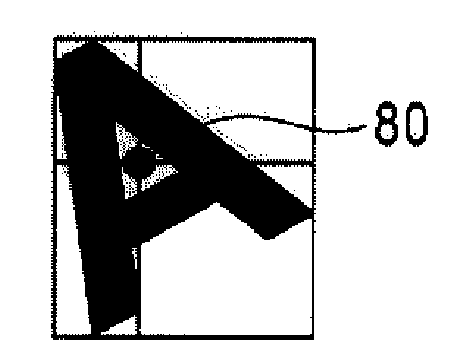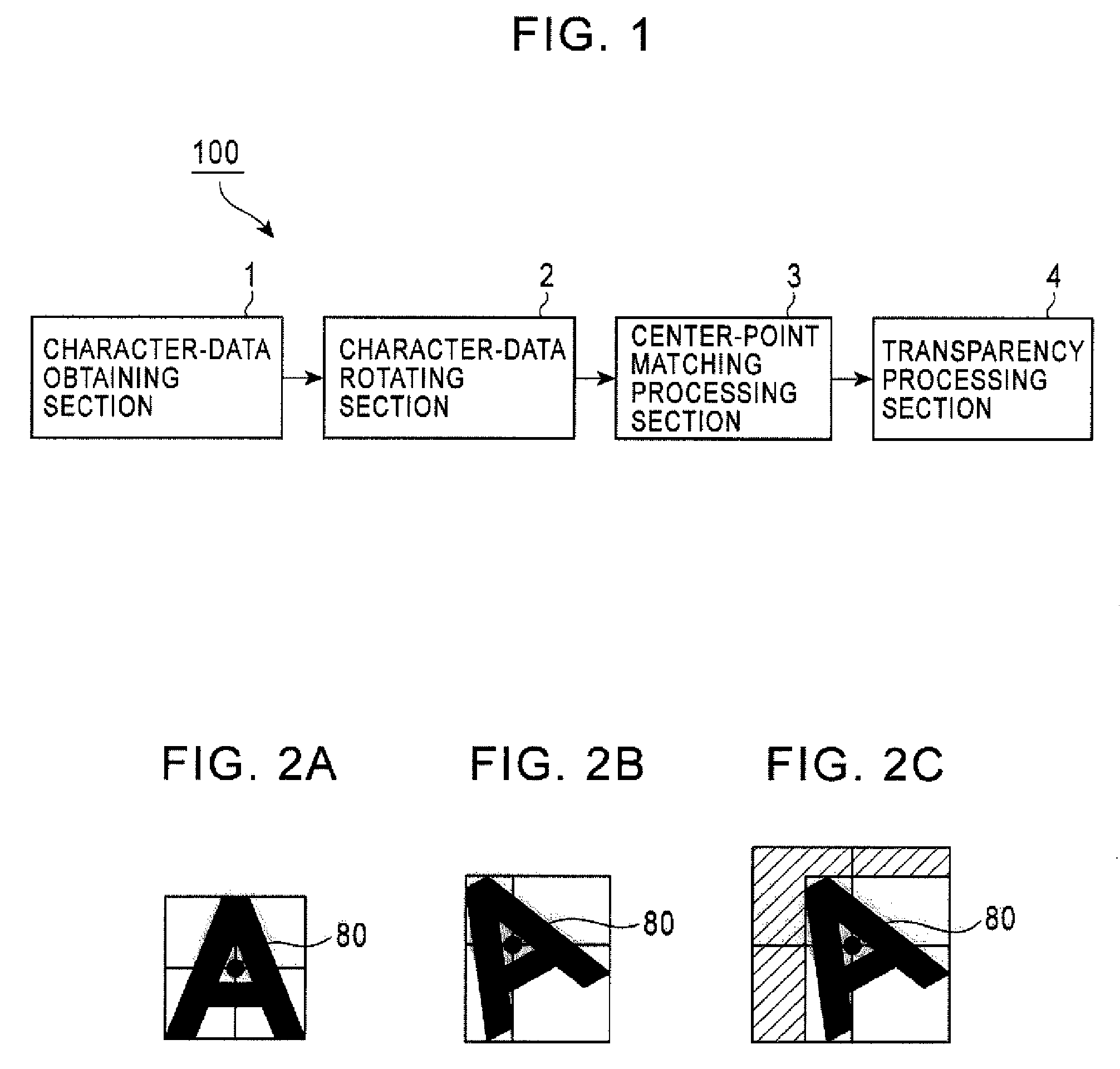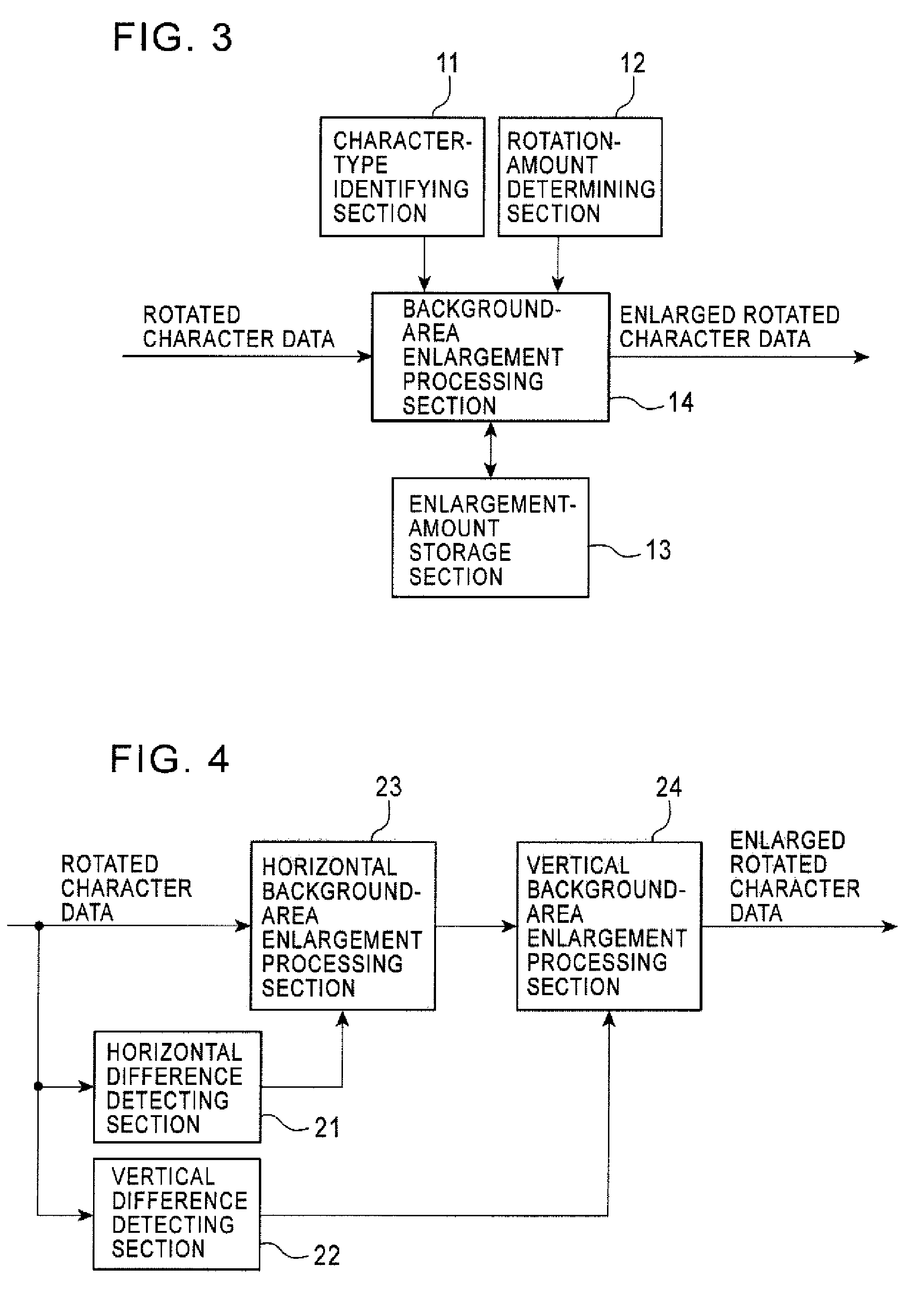Method And Device For Generating Character Data, Method And Control Device For Displaying Character Data, And Navigation Apparatus
- Summary
- Abstract
- Description
- Claims
- Application Information
AI Technical Summary
Benefits of technology
Problems solved by technology
Method used
Image
Examples
Embodiment Construction
[0028]An embodiment of the present invention will be described below with reference to the accompanying drawings. FIG. 1 is a block diagram showing an example of the functional configuration of a character-data generating device 100 according to one embodiment. FIGS. 2A to 2C show examples of character data processed by the character-data generating device 100 according to the present embodiment.
[0029]As shown in FIG. 1, the character-data generating device 100 according to the present embodiment includes a character-data obtaining section 1, a character-data rotating section 2, a center-point matching processing section 3, and a transparency processing section 4. In practice, the functional blocks 1 to 4 are implemented by, for example, a CPU or MPU and RAM or ROM in a computer and can be achieved by running a program stored in the RAM or ROM.
[0030]The character-data obtaining section 1 obtains character data in which a regular-position character having a rotation angle of 0° exist...
PUM
 Login to View More
Login to View More Abstract
Description
Claims
Application Information
 Login to View More
Login to View More - R&D
- Intellectual Property
- Life Sciences
- Materials
- Tech Scout
- Unparalleled Data Quality
- Higher Quality Content
- 60% Fewer Hallucinations
Browse by: Latest US Patents, China's latest patents, Technical Efficacy Thesaurus, Application Domain, Technology Topic, Popular Technical Reports.
© 2025 PatSnap. All rights reserved.Legal|Privacy policy|Modern Slavery Act Transparency Statement|Sitemap|About US| Contact US: help@patsnap.com



